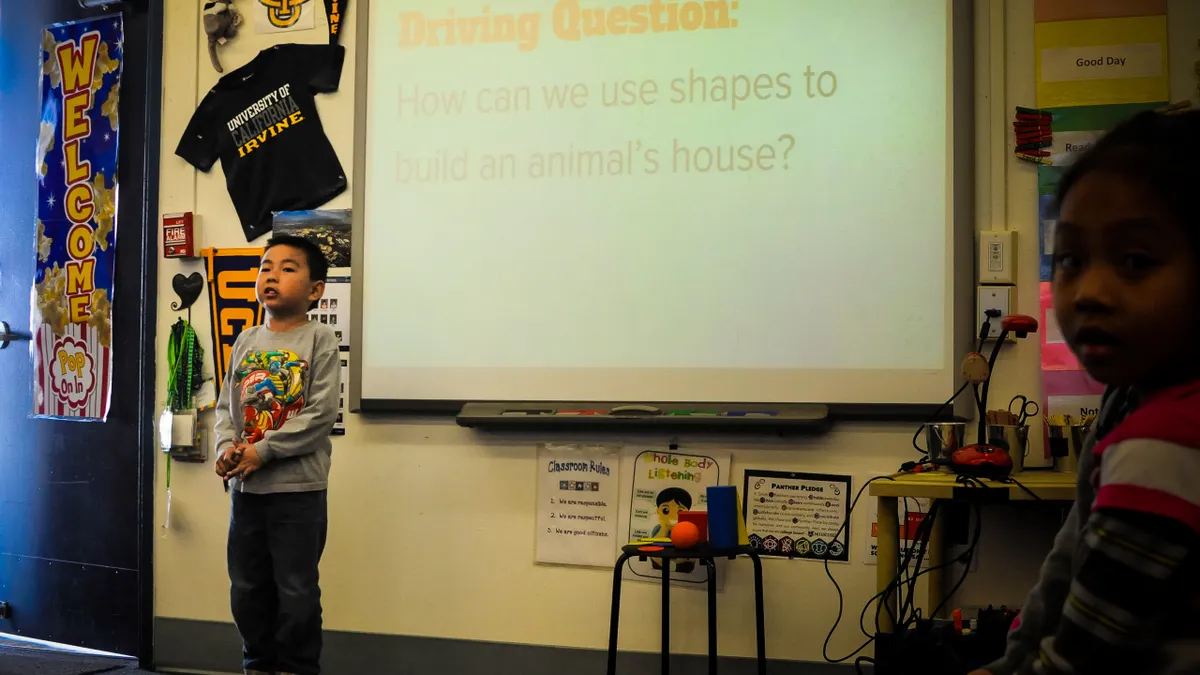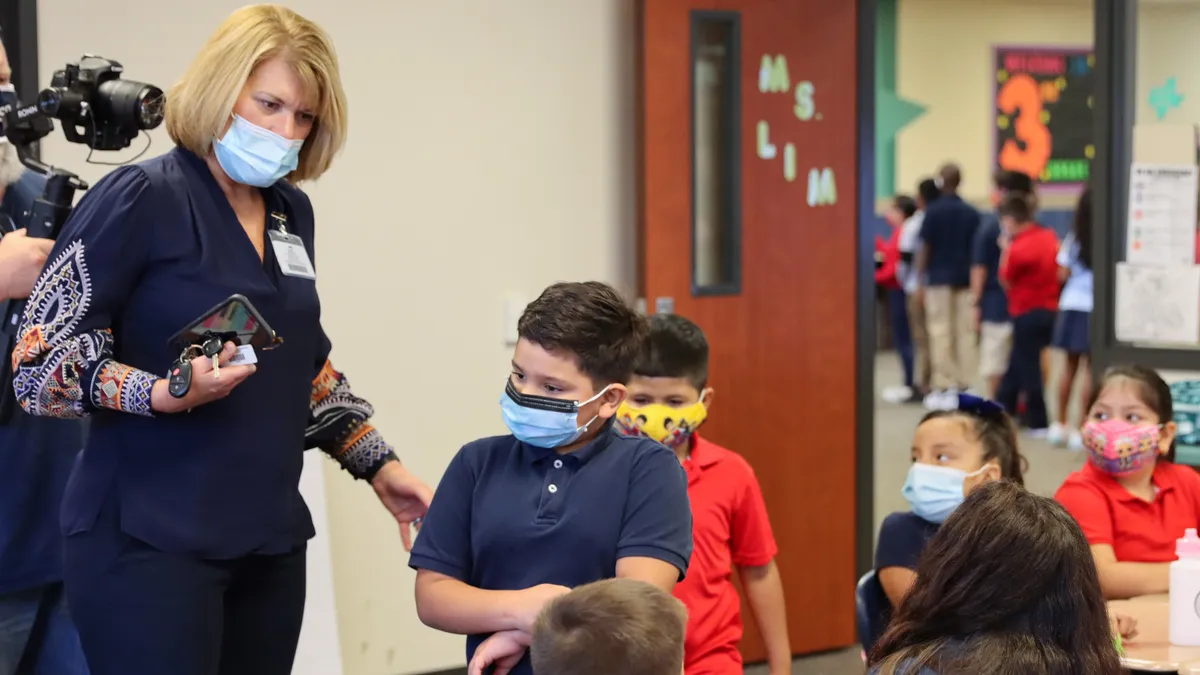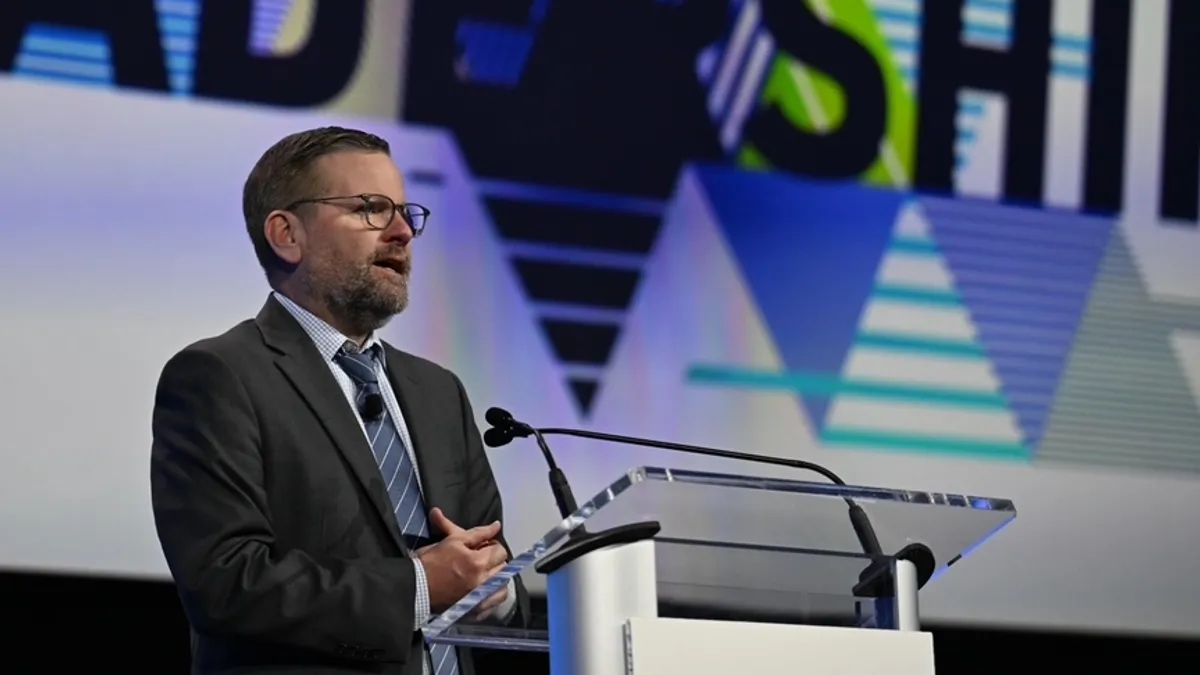When Aaron Brengard became principal of Katherine Smith Elementary School in San Jose, CA, charged with redesigning the school as a hub for 21st century learning, he knew he needed a team of people committed to his vision. At the time, Katherine Smith Elementary had high numbers of suspensions and a majority of students living in poverty, many of them in violent neighborhoods. Brengard was the fifth principal in 10 years, and he knew many teachers were burnt out — tired of new people and new ideas.
Three-quarters of the staff took advantage of the opportunity to transfer to different schools, and Brengard now realizes he pulled a lot of leaders from other sites to fill his open positions — people who were bored with teaching from the same textbooks and craving more autonomy in their curriculum design.
Two more teachers left after the first year of the redesign, but since then, the only staffing changes have been due to promotions. Teachers and administrators at Katherine Smith are fully committed to their students and a 21st century model that prioritizes project-based learning and the teaching of skills students are sure to need in an ever-changing world.
“We have a moving target,” Brengard said. “But things like collaboration — I know for a fact we’re going to have to work together.” Projects in Katherine Smith classrooms ask students to do more than sit at group tables. They have to build off each other’s ideas, create things together and give each other feedback. “I know that kids are going to need that no matter what happens to jobs and careers in our lives.”
The same is true for oral communication skills, goal-setting and perseverance, Brengard says. While Katherine Smith students don’t take classes in any of these skills, they learn them through projects in more traditional disciplines. Sometimes those projects last two months, while others can be completed in just a few days or a single lesson. The key, no matter the project length, is asking students good questions that provide a driving force for student exploration of content areas and then stepping back to give students opportunities to do research and, ultimately, present their findings.
Capturing progress
The school climate at Katherine Smith Elementary School has been transformed since Brengard led the redesign. Now, in year five of the work, Brengard is grappling with how to sustain continuous improvement. He’s the first to admit there is still much work to be done.
Students still score abysmally low on standardized tests. Behavior problems, though far diminished since the redesign, creep back up in between projects. Writing presents a particular challenge in a school where nearly two-thirds of students are bilingual and still learning English. While their speaking skills and critical thinking skills are impressive, a single standardized test score fails to reflect their strengths.
Brengard has created a range of nontraditional data points to measure — and report — the school’s progress. Administrators rely on surveys for feedback from students as well as their families. Routine presentations of student projects also give parents an opportunity to see the results.
One recent economics project for third grade students required them to design a product and learn about supply and demand as well as marketing. Volunteers, including members of the local chamber of commerce, served as “sharks” in a Shark Tank-like presentation, and a fair let parents see the products and talk to students about manufacturing costs and their design process.
These projects provide evidence that students are learning important skills, even if test scores remain stubbornly low.
“It does help really communicate what we’re doing that doesn’t show up in bar charts and graphs,” Brengard said. “You can’t believe a third grader would have this understanding of supply and demand at the level they do until you see it.”
‘Exemplar School’
Katherine Smith Elementary became an exemplar school through the Partnership for 21st Century Learning, or P21, during the 2014-15 academic year. David Ross, P21’s chief strategy officer, says the school staff stands out among the more than 20,000 teachers he has worked with through professional development and coaching during his career.
“I don’t think I’ve ever seen a school site more deliberately and thoughtfully approach the work than they have,” Ross said, adding that the school attracts smart, ambitious, experimental teachers who Brengard empowers through shared leadership.
Every teacher serves on a leadership committee focused on one of the three main parts of the school’s learning model: deeper learning outcomes, personalized learning and social-emotional learning. Teachers also work in professional learning communities and have a say in their own professional development plans. They work together to assess school initiatives and revise them based on what did and did not work.
P21 promotes a framework for 21st century learning that prioritizes learning content knowledge in traditional subject areas and interdisciplinary themes as well as skills in three realms: life and career, learning and innovation, and information, media and technology. Its evaluation system assesses whether schools produce student outcomes in these areas and whether they have enabling conditions in place to do so, including 21st century learning environments, professional development, curriculum and instruction and standards and assessment.
In general, Ross believes schools are not doing particularly well when it comes to teaching students 21st century skills that will help them be successful in college and career. For a long time, No Child Left Behind created a perverse motivation to focus on math and English Language Arts at the exclusion of other subject areas and teach skills that contribute to high standardized test scores rather those that students will need to be successful in life.
Ross says the Every Student Succeeds Act could change that with its focus on social-emotional learning and a call to educate the whole child.
Whatever way the political winds blow, however, teachers and administrators at Katherine Smith Elementary School are committed to forging ahead with priorities they are sure will prepare students for college and career. Brengard says they haven’t figured everything out yet — they haven’t found a solution to poverty, for one — but he knows his school is on the right track.





















